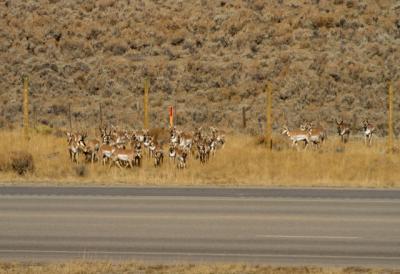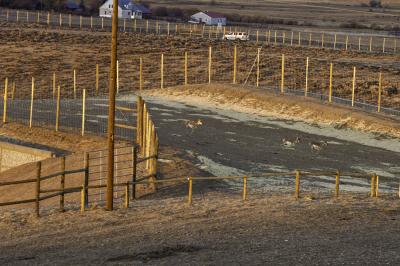Animal Overpasses Let Pronghorn Cross US Highways

Each year, thousands of pronghorn trek an impressive 93 miles (150 km) across Wyoming, between their wintering grounds in the Upper Green River Basin and their summer home in Grand Teton National Park.
But as development in the region expands, the antelope-like animals increasingly hit obstacles along their migration corridor, from new fences and roadways to pipelines and oil fields.
Conservation and wildlife officials recently stepped in with a counterstrategy — animal overpasses and underpasses that allow the pronghorn to cross highways and other barriers safely.
"They eliminate the danger of collisions and will help to preserve a spectacular element of our natural heritage — the longest mammal migration in the 48 contiguous United States," said Joel Berger, a scientist with the Wildlife Conservation Society (WCS). "This is an accomplishment that all Americans can celebrate."
The WCS used GPS tracking collars to collect five-years-worth of data on the location and timing of specific crossing points and obstacles along the so-called "Path of the Pronghorn." This information helped the Wyoming Department of Transportation build eight safe passages (two overpasses and six underpasses) along a 13-mile stretch of highway. They also installed eight-foot high barrier fences to guide the pronghorn to the crossing points. According to WCS, the passages will accommodate mule deer, moose, elk and other animals, too.
One of the overpasses was built at Trapper's Point on U.S. Highway 191, which has historically been a "bottleneck" problem area for the pronghorn, with thousands of the animals forced to cross traffic lanes, putting both the animals and drivers in danger.
Pronghorn are found only in North America and they are the fastest hoofed animal on the continent. They once numbered an estimated 35 million in the early 19th century. About 700,000 remain today and more than half of those live in Wyoming.
Get the world’s most fascinating discoveries delivered straight to your inbox.
Follow LiveScience on Twitter @livescience. We're also on Facebook & Google+.




